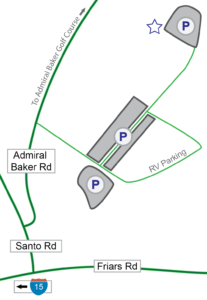October 2017
Honoring Yesterday – Protecting Tomorrow
Vol. 48, No. 10
What’s Inside
- President’s Message
- Recent Events
- Whoever Has Will Be Given More
- Pension Facts
- 6 Ways to Keep Heart Healthy
- Coming Home North County
- Health Fair Picnic
- Walk4ALZ San Diego
- Meet and Greet
- Save the Date
- Annual RESDC Member Survey
- Online Member Directory
- Bits and Pieces
- RESDC Open Enrollment
- SDCERA Open Enrollment
- SDCERA Eliminates Benefits Committee
- Discontinuation of “In Memoriam” Column
- Welcome New Members
October Calendar of Events
Weds., October 4, 11:00am
Coming Home to North Inland Live Well Center
649 W. Mission Ave, Escondido, 92025
Thurs., October 12, 9:30am
RESDC Board of Directors Meeting
8825 Aero Drive, Suite 205
Tues., October 17, 10:00am
Lunch served from 11:30am – 12:30pm
RESDC Health Fair Picnic
Admiral Baker Field
2400 Admiral Baker Rd, San Diego, 92124
Thurs., October 19, 9:00am
SDCERA Board of Retirement Meeting
2275 Rio Bonito Way, Suite 200
Mon.-Weds., October 23-25
CRCEA Conference
Alameda County, Emeryville, CA
President’s Message
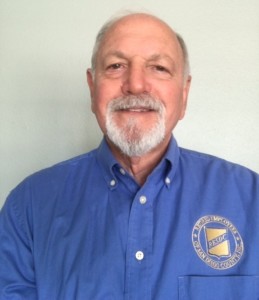
By John J. McTighe
RESDC is a founding member of the San Diego Retirement Security Roundtable along with the City of San Diego Retired Employees Association (REA) and the Retired Fire & Police Association of San Diego (RFPA). Since its establishment three years ago, the Roundtable has expanded to include representatives from state and federal employee organizations who have the common interest of defending defined benefit plans for public employees. In semi-annual meetings, the participants review current trends and activities affecting defined benefit plans. We have also formulated common messages about secure retirement. Recently, we have become more pro-active in reaching out to the media with positive messages related to defined benefit plans. Our most recent commentary, signed by REA president Jim Baross, RFPA president Dave Hall, and me on behalf of RESDC, was submitted to the San Diego Union-Tribune in late August. The information contained in it is very good for all retirees to be aware of and to share with their friends and family. The commentary is reprinted in its entirety below:
SETTING THE RECORD STRAIGHT ON FULL PUBLIC PENSION FUNDING
Stark headlines have appeared over the past few years proclaiming that public pension plans in California are woefully underfunded and that basic services like police, parks, and libraries may suffer as a result. In fact, full funding of public pension plans isn’t necessary or even prudent for their healthy operation, according to a recent analysis by Tom Sgouros of the Haas Institute in Berkeley.
In the private sector, pension systems need to be 100% funded to protect the pensions of workers in case of bankruptcy. In the public sector, however, while governments may encounter periodic budget ups and downs due to economic cycles and fluctuating revenues, they are not going away. Public employees are hired and begin contributing to the pension system during their working lives. Their contributions help pay the benefits of retirees who worked before them. Once they retire, contributions from employees who replace them will help pay their retirement benefits, and so on, indefinitely.
Full funding of a public pension plan amounts to covering the total future benefits of all current workers. The Hass Institute analysis describes this as a waste of money because it equates to insuring against a city or county’s disappearance. According to the report, the real question of a pension plan’s fiscal viability is whether it can continue to pay its obligations each year, in perpetuity; not whether it can cover all future obligations immediately. This is why some fiscal credit rating agencies consider a 70-80% funded ratio adequate for public pension systems.
Imagine you sign a lease to rent an apartment for 12 months at $1,000 a month. Your ultimate obligation is $12,000, but should the landlord refuse to rent to you if you can’t show you have $12,000 available at the outset of the lease (100% funding)? No, the landlord simply wants assurance you can pay your rent each month.
If you’re a homeowner, you probably have a 30-year mortgage. Your mortgage allows you to own your home without fully funding the purchase. If, for example, you have a $300,000 home with a $150,000 mortgage, it might be said that your home ownership is at a 50% funded ratio. That’s not reckless; it’s prudent use of debt.
Each of these examples involves an ultimate obligation to pay off all the debt by a specific date. Public pensions are different in that the obligation is open ended, but so are the income sources.
Let’s consider a pension fund that has 70% of what it needs to pay all retirees decades in the future. During any given year, the pension fund must pay promised benefits to current retirees. Provided that annual contributions from the employer and current employees, combined with investment returns, are equal to benefit costs, the fund operates at break-even. If at the end of the year the fund is at 70%, it’s a wash. The fund can go on indefinitely under these conditions. According to the Haas report, America’s public pension systems were, on average, 74% funded as of 2014.
There are two strong reasons not to move to 100% funding. First, doing so would require significant, unnecessary expense to employees, employers, and taxpayers. Since public pensions can exist indefinitely at 70% or 80% funding, why not use those funds for more immediate needs?
There’s a larger concern though. Historically, when pensions in California approached 100% funding due to unusually high investment returns, policymakers reduced or skipped annual contributions, under the flawed assumption that high market returns were the new normal. They also increased benefits without providing adequate funding; again, expecting investment returns would cover the cost. When investment returns returned to normal, these decisions had long-term, negative consequences.
Some people speculate that future investment returns will be lower than past returns, requiring higher contributions from workers and taxpayers to sustain pension funds. In truth, no one knows. The prudent course is to review returns each year and make gradual course corrections, as needed. That’s why independent auditors regularly evaluate and advise public pension funds on necessary course corrections.
So, when you hear concerns about public pensions being underfunded, understand that ensuring 100% funding isn’t critical to the healthy functioning of a public pension system, and it can be very expensive. Both the City and County of San Diego pensions systems are quite stable at a 70-80% funding ratio. Wouldn’t the tax dollars required to get them to 100% funding be better spent on other needs – like police, parks and libraries?
Recent Events
- In case you missed it, SDCERA’s CEO David Wescoe recently reported on their website (www.sdcera.com) the following positive news: “SDCERA reported a preliminary investment return net-of-fees of 12.0% for the fiscal year ending June 30, 2017 (FY 2017). Then, with strong investment returns in July, coupled with the County’s FY 2018 employer pension contribution, SDCERA’s Trust Fund assets hit an all-time high of just over $12 billion.”
- The Center for Retirement Research at Boston College released a new brief entitled: “Are Many Retirees With Dementia Lacking Help?” The brief’s key findings, which can be accessed at http://crr.bc.edu/category/briefs/, include:
- Retirees with dementia need help managing their money to prevent mistakes, fraud, and abuse;
- One source of help is Social Security’s Representative Payee Program, which allows a designated person to receive and manage a retiree’s benefit check;
- Those without any help are more likely to be isolated from family, less educated, and non-white
Whoever Has Will Be Given More,
And They Will Have an Abundance
By Stan Coombs, Director
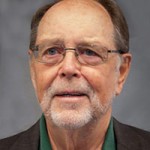 Few Americans have missed hearing about the increasing concentration of wealth, but it’s likely that fewer know how concentrated wealth has become and how broadly the term applies. It’s a worldwide phenomenon.
Few Americans have missed hearing about the increasing concentration of wealth, but it’s likely that fewer know how concentrated wealth has become and how broadly the term applies. It’s a worldwide phenomenon.
From the New York Times article, “The American Middle Class Is No Longer the World’s Richest,” by Dave Leonhardt and Kevin Quealy, we learn that the United States is still the richest large country, but U.S. median per capita income – $18,700 in 2010, about $75,000 for a family of four after taxes – remained virtually unchanged since 2000 after adjusting for inflation. The same measure rose about 14% in the Netherlands between 2000 and 2010, and 20% in Britain and Canada.
These conclusions were drawn from the Luxembourg Income Study database, analyzed by outside academic economists. And, readers who attended long-ago statistics classes will recall that a median average is the mid-most case in an array running from the lowest to the highest value, which means half those adult earners received less than $18,700 a year, some possibly near zero.
Then, University of Chicago and University of California economists, Emmanuel Saez, Thomas Piketty and Gabriel Zucman’s report, “New data: Inequality runs even deeper than previously thought,” includes reviews of 34 developed and emerging economies, beginning in 1800. They say new data fills in gaps, capturing 100% of U.S. income since 1913, including fringe benefits, capital income and transfer payments between groups.
The share of income of adults in the bottom half of the U.S. income distribution collapsed, Saez, Piketty and Zucman report, from 20% in 1980 to 12% in 2014, while the top one percent of adults received 12% in 1980 but 20% in 2014. They note the top one-percenters earn an average 81 times more than the bottom 50% of adults, while in 1981 they earned 27 times the lower half’s average. The income inequality since 1990 substantially resulted from equity and bond income.
In an earlier, 2015 report, “Striking it Richer: The Evolution of Top Incomes in the United States,” Saez had already noted that from 2009 to 2012, years immediately following the great 2008-09 crash, “The top one percent captured 91% of the income gains.”
More dramatically phrased, in 2017 OXFAM, a London-based, international confederation of charities, reported, “eight men own the same wealth as the 3.6 billion people who make up the poorest half of humanity.” And, in “An Economy For The 99 Percent,” they speculated that the world could see its first trillionaire within 25 years, who could then spend $1 million a day for the next 2,738 years!
In stark contrast, one in ten people survive on less than $2 a day, and that extreme inequality is trapping hundreds of millions in poverty, fracturing societies and undermining democracy.
So, what’s the distribution of actual dollars? Credit Suisse Research Institute reported total global wealth of $256 trillion, in 2016. They say the wealthiest 10% of the global population owns 89% of global assets, while the bottom half owns less than 1%.
Within the United States, personal wealth stands at $94.8 trillion, according to The Federal Reserve. Within that, says G. William Domhoff, at the University of California, our wealthiest 20% own 89% of the privately held wealth, or roughly $84.4 trillion. That leaves about 11% of the U.S. wealth, or $10.4 trillion, for the bottom 80% of the population, one would think (?)
See 2013 Survey of Consumer Financial Figures, on website DQYDJ, for another slant (DQYDJ = Don’t Quit Your Day Job).
If you have absolutely no assets and no debts, they say, you’re already at the 11.8th percentile of net worth, which, assuming a U.S. population of 320 million, means some 38 million Americans carry more debt than assets. If you have a $14,840 net worth, you’re at the 30th percentile, and 96 million of us are equally or less financially fortunate. If you have an $81,456 net worth, you’re at the 50th percentile and wealthier than most of 160 million other Americans. And, you aren’t a legitimate millionaire until you reach the 90.5th percentile, which means fewer than 10%, or 32 million Americans, are millionaires.
Ironically juxtaposed against this picture, the Economic Policy Institute reports compensation of CEO’s in large firms averaged $15.6 million in 2016, a ratio of 271-to-1 times the average pay of workers. That’s a small reduction from the 299-to-1 ratio in 2014, but still enormously more than the 20-to-1 ratio in 1965 and 59-to-1 ratio in 1989. CEO pay measured included salary, bonuses, realized stock options, restricted stock grants and long-term incentive payouts. Just so we don’t lose perspective, those high CEO wages are only 5.33 times the annual earnings of other very-high-wage-earners (the top 0.1 percent), the Economic Policy Institute says.
With all this, the newly appointed Chairman of the U.S. Securities and Exchange Commission, Michael Piwowar, recently called for reconsideration of an adopted SEC rule, requiring disclosure of company CEO-to-worker pay ratios in corporate proxy statements, despite strong support for the rule from major investors and investor organizations.
Pension Facts
In Defense of Public Pensions
Pension Facts at a Glance
$12 Billion
SDCERA Trust Fund assets recently hit an all-time high, according to CEO David Wescoe.
By Chris Heiserman, Director
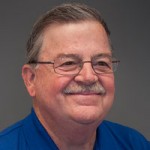 Sometimes it seems the retirement plans we contributed to throughout our careers in public service are besieged by naysayers. Our pensions are castigated for allegedly being too expensive for taxpayers and destined to gobble up dollars needed for police, parks, and libraries. Because many media sources and editorial writers regularly peddle these anti-public pension narratives, the average citizen on the street must be at least vaguely aware of these claims.
Sometimes it seems the retirement plans we contributed to throughout our careers in public service are besieged by naysayers. Our pensions are castigated for allegedly being too expensive for taxpayers and destined to gobble up dollars needed for police, parks, and libraries. Because many media sources and editorial writers regularly peddle these anti-public pension narratives, the average citizen on the street must be at least vaguely aware of these claims.
So, when your neighbor or a parent at the playground or grocery store indignantly accuses you of having one of those so-called lavish public pensions, how say you? I suggest politely informing the inquisitor that your hard-earned pension is not overly generous and pleading guilty to being lucky enough to enjoy a reasonable, secure retirement after a long career serving people. I would add that everyone deserves the same.
Unfortunately, the option of a reasonable retirement upon leaving the work force is not available to everyone. Numerous surveys have documented that one-third of Americans have nothing set aside for retirement, and more than half of U.S. households have $10,000 or less in savings. This woeful lack of retirement savings by most workers and their families is the real emergency facing America; not the bogus pension “crisis” label consistently aimed at public retirement plans by critics who rant about halting defined benefit pensions and replacing them with less efficient and more costly 401(k) savings accounts.
Rebutting the Pension “Crisis” Myth
RESDC monitors news stories, reports, journal articles and commentary about retirement related issues from around California and across the country. We provide links to this information on our Facebook page and under the “News Now” navigation tab on our website (www.resdc.net). In a recent four-part series titled “The ‘Pension Crisis’ is a Myth”, the National Public Pension Coalition (NPPC) provides some ammunition to defend public pensions and debunk some of the charges leveled by public retirement plan detractors. Here are some brief bullets:
- Public pension pooled funds are professionally managed over long-time horizons so the majority of monies distributed to retirees are derived from investment earnings;
- Public pension critics predict looming fiscal disaster because most retirement funds are not 100% funded; in fact, a compelling argument can be made that it is counterproductive and wasteful to push too quickly for full funding when the need for paying retiree benefits to current workers is many years in the future (see the commentary included in President John McTighe’s column this month, “Setting the record straight on full public pension funding”);
- Public pension plans work well when state and local governments regularly make the actuarially calculated annual contributions. The State of Illinois is roundly criticized for the sheer size of its unfunded pension liability ($251 billion by some estimates) and often cited by pension foes as an example of defined benefit failure. However, the NPPC report said the state of Illinois has not fully funded its prescribed annual contributions to its pension funds in 78 years;
- A popular proposal from pension critics to “reform” retirement plans is to close defined benefit programs and place new hires into 401(k)-style defined contribution plans. Aside from the fact that this translates into significantly less retirement security for all future workers (as well as recruitment challenges), this approach has actually cost more to administer and operate than the original pension plan for those jurisdictions that implemented it.
Six Ways to Keep Your Heart Healthy As You Age
This article was submitted by My Senior Health Plan (MSHP). MSHP is a free service that works with individuals to make sure they aren’t paying too much for health insurance premiums. Call (619) 501-9830 or visit www.myseniorhealthplan.com/crcea to see how much you could save on your premiums!
Did you know 42.2 million people over age 60 have cardiovascular disease? Heart disease is the leading cause of death in the United States, with 610,000 people dying each year. Out of all cardiovascular disease deaths, 66% occur in people age 75 and over. Even though the statistics are sobering, it’s possible to keep your heart healthy throughout your retirement years. Follow these six guidelines to improve whole-body health and reduce your risk of heart disease:
Commit to a Heart-Healthy Exercise Routine. Your heart is a muscle, and like all of the other muscles in your body, it needs regular activity in order to get stronger. Doctors recommend that adults aged 65 and older should exercise for 150 minutes per week at medium aerobic intensity. Whether you take a brisk walk around the neighborhood or attend a weekly yoga class, make sure you get your exercise time in.
Quit Smoking and Reduce Alcohol Intake. Smoking is one of the most dangerous habits for your health. Even secondhand smoke exposure is harmful. In fact, exposure to secondhand smoke alone raises your chances of developing heart disease by 25 to 30%. It’s time to eradicate tobacco from your life. You should also cut down on the amount of alcohol you consume. Excessive alcohol consumption negatively affects cholesterol levels and blood pressure.
Eat Fruits and Vegetables. Your health is closely connected to your diet. Are you eating a wide variety of fruits and vegetables? Cut out trans fats altogether. Eat whole grains, legumes, fish and low-fat dairy products. Make sure you’re eating the right amount of calories every day and drinking enough water to stay hydrated. Sticking to a healthy diet is one of your strongest defenses against cardiovascular disease.
Monitor Cholesterol and Blood Pressure. If you have high cholesterol and abnormal blood pressure, don’t avoid your doctor. Make sure you stay on track with your appointments because regular monitoring will help spot health issues before they lead to a cardiovascular event.
Make Dental Care a Priority. Surprisingly enough, the health of your teeth and gums is connected to the health of your heart. You can keep your heart healthy by brushing, flossing and visiting the dentist on a regular schedule. Gum disease that goes unchecked can cause inflammation in your blood vessels and increase your risk of heart disease.
Get Quality Sleep Every Night. A full, healing night’s rest is essential, no matter your age. Make sure you’re getting seven to eight hours of quality sleep every night. Too little sleep can raise inflammation levels and blood pressure – two factors that contribute to heart disease.
You’re Invited!
Coming Home
to the North Inland Live Well Center
When
Wednesday, October 4, 2017 at 11:00am
Where
North Inland Live Well Center
649 W Mission Ave, Escondido, CA 92025
What
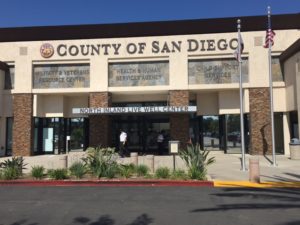 Our annual “Coming Home” event invites retired employees of San Diego County to celebrate County sites. On October 4th, we invite you to join your fellow RESDC members in “coming home” to the County’s new North Inland Live Well Center in Escondido.
Our annual “Coming Home” event invites retired employees of San Diego County to celebrate County sites. On October 4th, we invite you to join your fellow RESDC members in “coming home” to the County’s new North Inland Live Well Center in Escondido.
Opened in 2015, the center serves as a community hub for health and social services. The center also houses the County of San Diego’s Military and Veterans Resource center, including many community-based organizations dedicated to assisting military veterans and their dependents and survivors.
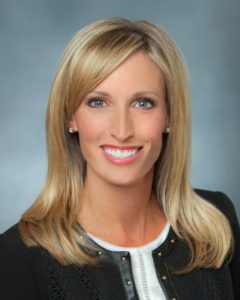 Our event will kick off with welcoming remarks from Kristin Gaspar, Vice Chairwoman of the San Diego County Board of Supervisors. Prior to becoming a Supervisor, Gaspar was an Encinitas City Council Member and went on to become the first Mayor ever elected in that city. Supervisor Gaspar believes in fiscal discipline and accountability. She is a proponent of protecting the environment and preserving open spaces. Other issues that are important to Supervisor Gaspar include: the growing homeless problem around the county, public safety, and improving our streets, infrastructure and neighborhoods. Recently, she partnered with her colleagues on a County initiative to help those with Alzheimer’s receive the proper care they need. Kristin was born and raised in North County and is proud to represent her hometown community.
Our event will kick off with welcoming remarks from Kristin Gaspar, Vice Chairwoman of the San Diego County Board of Supervisors. Prior to becoming a Supervisor, Gaspar was an Encinitas City Council Member and went on to become the first Mayor ever elected in that city. Supervisor Gaspar believes in fiscal discipline and accountability. She is a proponent of protecting the environment and preserving open spaces. Other issues that are important to Supervisor Gaspar include: the growing homeless problem around the county, public safety, and improving our streets, infrastructure and neighborhoods. Recently, she partnered with her colleagues on a County initiative to help those with Alzheimer’s receive the proper care they need. Kristin was born and raised in North County and is proud to represent her hometown community.
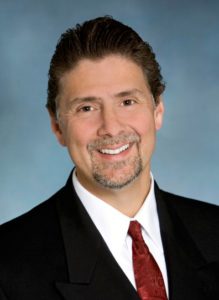 The keynote speaker will be Dr. Nick Yphantides, who currently serves as the Chief Medical Officer for San Diego County and its 3.3 million residents (1% of America’s population). He is the Founding Co-Chair of San Diego’s Childhood Obesity Initiative, was the Chief Medical Officer (CMO) of one the largest network of Community Clinics in San Diego County, the CMO of the Council of Community Clinics and was the publicly elected Chairman of the Board for Palomar Health, the largest Public Hospital District in California. Dr. Nick currently serves on several Boards including San Diego Health Connect (our regional Health Information Exchange), the San Diego County Medical Society, Champions for health and several other community based and charity organizations.
The keynote speaker will be Dr. Nick Yphantides, who currently serves as the Chief Medical Officer for San Diego County and its 3.3 million residents (1% of America’s population). He is the Founding Co-Chair of San Diego’s Childhood Obesity Initiative, was the Chief Medical Officer (CMO) of one the largest network of Community Clinics in San Diego County, the CMO of the Council of Community Clinics and was the publicly elected Chairman of the Board for Palomar Health, the largest Public Hospital District in California. Dr. Nick currently serves on several Boards including San Diego Health Connect (our regional Health Information Exchange), the San Diego County Medical Society, Champions for health and several other community based and charity organizations.
Event Highlights
- 11:00 am – Reception & Resource Booths – light hors d’oeuvres and refreshments available
- 11:20 am – Welcoming Remarks by RESDC and Kristin Gaspar, Vice Chairwoman of the San Diego County Board of Supervisors
- 11:35 am – Keynote Speech by Dr. Nick Yphantides, San Diego County Chief Medical Officer
- 12:00 pm – Guided Tour
Directions
- Take I-15 North.
- Use exit 32 to merge onto CA-78 East, and then exit onto Centre City Pkwy S.
- Take an immediate right onto W Mission Ave.
- Turn left at Alvarado Way into the parking lot.
RSVP
This is a FREE event. RSVP is requested but not required: online by clicking here and following the steps, or by calling (619) 688-9229.
Annual RESDC Health Fair Picnic
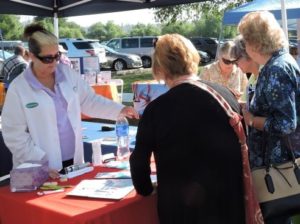 When
When
Tuesday, October 17, 2017, 10:00 am – 1:00 pm Lunch Served 11:30 am – 12:30 pm
Where
Admiral Baker Field 2400 Admiral Baker Rd., San Diego, CA 92124
What
The annual RESDC Health Fair Picnic is an outdoor event with over 20 resource booths related to health and wellness. Enjoy a buffet style barbecue lunch, an opportunity drawing, and mingling with fellow retirees.
Menu
Barbecued beef, green beans, baked beans, fruit, coleslaw, rolls, beverages, and dessert.
Sponsored By
Ameritas Dental, Cigna Dental, Health Net, Kaiser Permanente, Pacific Group Agencies, Inc., San Diego County Credit Union, United HealthCare, and My Senior Health Plan.
Registration – New Registration Process This Year
Step 1: Determine Price
- RESDC Members: $0. Although members attend for free, RESDC members are required to register in advance.
- Non-Members: $5. Spouses, guests, retirees who have not joined RESDC, etc. are required to pay $5 each.
Everyone must register in advance. This ensures we are in compliance with the policy of Admiral Baker Field to not complete financial transactions onsite. We no longer require members to send a deposit, and we will not return checks or cash at the fair. RESDC members attend for free but are required to register in advance.
Step 2: Choose Registration Method
Register by Mail:
- Print and fill out the registration form.
- If there are non-member attendees in your group, make a check payable to RESDC for $5 per non-member.
- Mail registration form, along with check for non-members, to RESDC, 8825 Aero Dr., Suite 205, San Diego, CA 92123
Register Online:
- Click here to register online.
- To access the free RESDC member price, use the email associated with your member account.
- Click “Add guest” to add non-member attendees for $5 each.
- To pay for non-member attendees, click “Pay Online” and pay with credit card; otherwise, click “Confirm.”
- To register an additional RESDC member, go through the registration process again, using their email address or call the RESDC Office at (619) 688-9229.
Register by Phone:
- Call the RESDC Office at (619) 688-9229 during our hours of 9 am – 2 pm Mon-Fri.
Important Registration Information
Reservation forms and payment must be received in the RESDC office by Thursday, October 12. There are no refunds. Registration packets (with meal ticket, name badge, & opportunity drawing ticket) should be picked up at the picnic registration table. They will not be mailed. No pets are allowed at Admiral Baker Field except Service Animals. For questions or assistance registering, contact us at (619) 688-9229 or resdc@resdc.net.
Directions to Admiral Baker Field
If using Route 15:
Turn East onto Friars Road and left on Santo Road, Right on Admiral Baker Road, and turn right at the next stop sign.
If using Route 8:
Take 8 to Route 15 North, turn East onto Friars Road, left on Santo Road, and Right on Admiral Baker Road, turn right at the next stop sign.
Upon entering the park, there will be signs to direct you.
Join Team RESDC in Upcoming Walk4ALZ San Diego
By Laurie Pennington, Member
 We’re all part of this world, related and meant to work with one another towards a joyful, healthy, and peaceful life. But what if during your journey, you find yourself or a family member stricken down with a disease? A disease that you can’t put your arms around and even make sense of in your mind and heart … one like Alzheimer’s! A disease that will rob you, your family member, or friend of their memories and just how to cope with their day to day living and eventually be just a shell of the person you once knew.
We’re all part of this world, related and meant to work with one another towards a joyful, healthy, and peaceful life. But what if during your journey, you find yourself or a family member stricken down with a disease? A disease that you can’t put your arms around and even make sense of in your mind and heart … one like Alzheimer’s! A disease that will rob you, your family member, or friend of their memories and just how to cope with their day to day living and eventually be just a shell of the person you once knew.
Supervisor Dianne Jacob is a champion in leading and supporting many local efforts to address Alzheimer’s Disease. She says, “Events like the Walk4ALZ are so important because they help rally the community around one of our biggest public health challenges—the growing epidemic of Alzheimer’s. I’m so pleased the Retired Employees of San Diego County is part of the growing army of San Diego organizations that are working to battle this disease and comfort families.”
We can be the beginning. We can help find the cure and cause, and to someday STOMP out ALZ. It starts with each one of us, helping – either by walking and raising monies, or just donating!
All the monies raised in the Walk4ALZ San Diego STAYS in SAN DIEGO. Yes, it stays in San Diego. Last year Team RESDC raised over $1,200 and we’re hoping to exceed that total and have more walkers on our team too.
It’s not too late to join Team RESDC for the upcoming Saturday, October 21st walk in Balboa Park. Simply visit the link provided below, and sign up to walk with us, donate, or do both.
I am honored to be chosen as the TEAM CAPTAIN for the 2017 Walk, and I know you won’t let me down in this campaign. So, come on fellow San Diego County Retirees and family members, let’s all make a difference! Let’s show how COUNTY Strong we all are!
To register, go to www.resdc.net/community-events and click on “Team RESDC on the Walk4ALZ website.” If you’re unable to participate, please consider making a $35 donation to our fundraising campaign. Thank you!
Walk4ALZ 2017 – Balboa Park:
Date: Saturday, October, 21, 2017
Where: Balboa Park, start by the Hall of Champions
2131 Pan American Plaza, San Diego, CA 92101
Registration and Check-in at 6:30 am. Opening Ceremony at 7:30 am. Walk at 8:00am.
Meet and Greet with RESDC Leadership
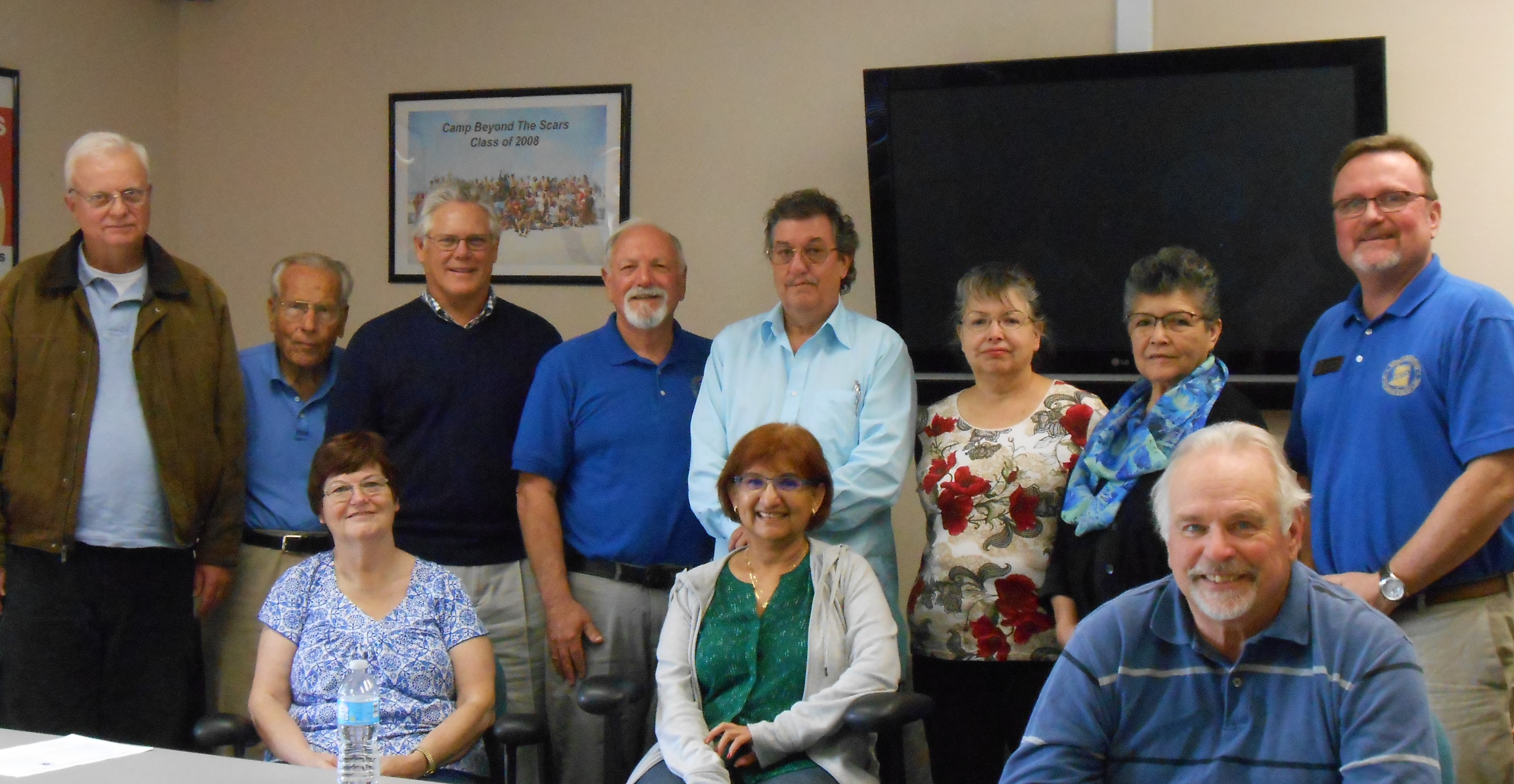
When
Monday, November 6, 2017 at 9:30 am
Where
Bonita-Sunnyside Branch Library – Community Room
4375 Bonita Road, Bonita, CA 91902 (Map)
What
RESDC members and any other interested parties are cordially invited to join RESDC President John McTighe and Executive Director Mark Nanzer for an informal gathering.
This is your opportunity to interact with our leadership, learn more about the organization, and to ask any questions you may have. We hope to see you there!
RSVP
This is a FREE event. RSVP is requested but not required: online by clicking here and following the steps, or by calling (619) 688-9229.

Save the Date!
Holiday Luncheon
Thursday, December 14, 2017
The 2017 Holiday Luncheon will be held on Thursday, December 14, at the Bahia Resort Hotel, 998 West Mission Bay Drive, San Diego, CA 92109 (Map). Mark your calendars now. The reservation form will be in the November and December issues of The NETWORK.
Annual RESDC Member Survey
By Liz Silverman, RESDC Staff
 Thank you to everyone who participated in our annual survey. We are constantly looking for ways to improve and continue doing well, and your input is important in this process. Below are some of the results. We would also like to take this opportunity to address some of the common responses we received (in no particular order).
Thank you to everyone who participated in our annual survey. We are constantly looking for ways to improve and continue doing well, and your input is important in this process. Below are some of the results. We would also like to take this opportunity to address some of the common responses we received (in no particular order).
Results by the Numbers
- 96% are satisfied or very satisfied with their overall RESDC membership.
- 95% are satisfied or very satisfied with the benefits and discounts they receive as a RESDC member.
- Of those who are familiar with our events, 94% are satisfied or very satisfied with the events and activities RESDC provides.
- 92% read The NETWORK frequently or always, and 98% are satisfied or very satisfied with the newsletter.
Frequent Topics
How does RESDC select insurance plans to control for cost and quality?
(Note: Healthcare plans are through SDCERA. RESDC does not provide healthcare plans.)
The RESDC Board of Directors annually reviews insurance plans and costs with our benefit plan administrator, Pacific Group Agencies (PGA). The Board is concerned with continuing cost increases in the healthcare industry and regularly communicates with PGA to ensure our offered plans are not only competitively priced compared to the at-large market, but also provide quality coverage.
How does RESDC advocate for healthcare benefits?
(Note: Healthcare plans are through SDCERA. RESDC does not provide healthcare plans.)
RESDC regularly advocates to SDCERA staff and the Board of Retirement about the importance of SDCERA continuing the offering of quality, affordable healthcare options to County retirees. We stress that the retirees who take advantage of SDCERA-sponsored plans, count not only on what the plans offer, but also rely on the support SDCERA provides to help inform their decision-making. In addition to SDCERA healthcare options, there are individual and independent brokers’ plans available through the Covered California marketplace. Each individual’s situation is unique, so it’s possible that a Covered California plan may work well for you. More information is available at: http://www.coveredca.com/ or by calling (800) 300-1506.
Where can I get information and assistance with Medicare and selecting health insurance that’s appropriate for my situation?
San Diego County Residents have some great resources available when it comes to making decisions about Medicare:
- Elder Law & Advocacy’s HICAP (Health Insurance Counseling and Advocacy Program) program is staffed by trained counselors who can give you the information you need to make an informed decision about your healthcare choices. To make an appointment call: San Diego County (858) 565-1392 or Imperial County (760) 353-0223.
- My Senior Health Plan works exclusively with the Medicare-eligible population to ensure that our RESDC members are not paying too much for health insurance premiums. Call (619) 501-9830 and let them know you are a RESDC member to schedule your free personal review or visit www.myseniorhealthplan.com/crcea for more information.
Why is The NETWORK printed on seemingly expensive glossy paper?
We know it doesn’t seem like it, but the full color glossy newsletter is actually less expensive than the old blue and white matte finish newsletter thanks to our generous printing company, Superior Direct. We do our best to spend our members’ dues wisely.
I want to save RESDC some postage and/or go green by receiving the newsletter by email only. Is that an option?
Absolutely! We can update your mailing and email preferences at any time. Contact us at resdc@resdc.net or (619) 688-9229 and we’d be happy to update your account.
Please get discounts on _______________.
Thank you for all your wonderful suggestions! We’ll be reviewing these to determine which ones we can pursue. In the meantime, we encourage you to check out the many discounts that RESDC currently provides by visiting https://www.resdc.net/discounts/. We are continuously seeking ways to expand our offerings to members, while never detracting from our primary role as an advocacy organization.
I don’t attend events because I don’t think I’ll know anyone there.
We’re always trying to improve our events to reduce barriers to attendance. Feel free to say hi to the RESDC staff or board members (often in blue RESDC shirts or with name tags) and we’d be happy to introduce you to a few people. One of the great aspects of our events is that you’ll have something immediately in common with other attendees – you’re all County retirees. We encourage you to meet someone new by asking what department they used to work for as an icebreaker. It’s never too late to make new friends! We’ll continue to consider ways in which we can make all members welcome – whether they’re a party of 10 or 1.
Please have more events located around _______________.
RESDC tries to provide opportunities to attend our events to as many members as possible by holding our meetings throughout the County. Our General Membership Meetings are typically held in Escondido in February, San Diego in April, and Chula Vista in August. The Health Fair Picnic in the fall (October 17th this year – see page 10) and Holiday Luncheon in December are centrally located. The Flag Day Luncheon is typically in East County. And our Coming Home event rotates to a different County site each year; this year it is on October 4th at the North Inland Live Well Center in Escondido (see page 4 for details). This year, President John McTighe and Executive Director Mark Nanzer started informal “Meet and Greet” sessions for members in various locations around the county. Watch The NETWORK for a future Meet and Greet near you.
I wish more people knew about and joined RESDC.
We wish that too! We do our best to inform County employees about RESDC by presenting at pre-retirement seminars and hosting booths at pertinent County events. But we can only do so much by ourselves – do you want to help us spread the word? We’re starting a RESDC Ambassador program that will empower you with information and materials to help inform other retirees about the importance and benefits of joining RESDC. Please contact us at (619) 688-9229 or resdc@resdc.net if you’re interested in learning more about this new program.
Although we only conduct a survey once per year, we are open to feedback and suggestions year-round. Feel free to contact us at 619-688-9229 or resdc@resdc.net.
Online Member Directory
In April 2017, we launched our member self-service area of our website as part of our ongoing effort to better serve our members. Since then, over 300 members have logged in, and we’re pleased to report that the number keeps going up.
One of the great features of the service is an online Member Directory, which you can opt to join. It’s visible only to logged-in members of RESDC, and you choose what information to share.
The member self-service area can be accessed by going to www.resdc.net and clicking on the menu item for “Member Login.” You need to have an email on file with us in order to log-in. If you don’t currently receive emails from RESDC and would like to like to join both our email list and the member website, send us your full name and email address by contacting us at resdc@resdc.net or by calling (619) 688-9229.
Once logged into the site, join the Member Directory by going to the Privacy link on your Profile, clicking “Edit Profile,” and checking the box for “Show profile to others.” You can then select which information to display in the directory. Click “Save” at the bottom of the page to save your changes.
Bits and Pieces
Quote of the Month
“A people that values its privileges above its principles soon loses both.” -General Dwight D. Eisenhower
Leonora Bryan celebrated her 80th birthday in May! She retired from the Marshal’s Office in 1993. She celebrated with a party at The Red Lobster with family and friends. Leonora lives in Fontana, CA, but will be moving back to San Diego this month to be near some of her family.
Steve Collins and his wife, Anne, recently celebrated their 40th anniversary! Steve retired in 1989 from Health & Human Services after 18 years with the county. Steve and Anne are very active volunteers with their church in South Carolina.
Did You Know?
There’s another RESDC in California: Redwood Empire Swing Dance Club of Sonoma County.
“NETWORKING”
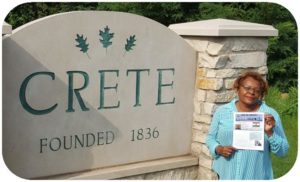 This Photo was submitted by Director Nellie Parks from her recent trip to Crete, Illinois. Nellie was visiting her sister in Crete and took this picture while holding the RESDC NETWORK.
This Photo was submitted by Director Nellie Parks from her recent trip to Crete, Illinois. Nellie was visiting her sister in Crete and took this picture while holding the RESDC NETWORK.
Crete was home to Nellie for a few years after her retirement from the county. Crete is 30 miles south of the Chicago Loop.
RESDC Open Enrollment
Dental, Vision, Legal, Pet, Car, Home, Life, Travel, Accident
 Around the beginning of November, all retirees will receive their 2018 RESDC Benefits Open Enrollment package. These benefits are offered exclusively to RESDC members. Available to members are two high benefit level dental plans, two vision plans, legal, pet, travel, accident, hearing aids, and much more.
Around the beginning of November, all retirees will receive their 2018 RESDC Benefits Open Enrollment package. These benefits are offered exclusively to RESDC members. Available to members are two high benefit level dental plans, two vision plans, legal, pet, travel, accident, hearing aids, and much more.
The Open Enrollment deadline for the dental plans is strictly enforced. Your enrollment form must be postmarked no later than November 30th, so don’t delay! If you are currently enrolled in any of the RESDC benefit plans, your coverage will automatically continue for 2018. You do not need to do anything if you are not making changes to your coverage.
At the RESDC Health Fair Picnic, on Tuesday, October 17th, our benefit plans administrator, Pacific Group Agencies, will be in attendance and will be able to answer your questions.
For questions about RESDC benefit plans, please contact our benefits plans administrator, Pacific Group Agencies, at 1 (800) 511-9065.
SDCERA Open Enrollment
Health, Dental
SDCERA offers Medicare and non-Medicare medical plans and two dental plans to retired Members and their dependents. Plans provide coverage in both California and out-of-state service areas, but service areas vary by plan. Detailed plan information is available on the Health Page on the SDCERA website at: www.SDCERA.com.
SDCERA “Open Enrollment” for these plans is November 1 to 22, 2017.
If you are enrolled in an SDCERA-sponsored health plan, your current plan elections(s) will automatically renew for the 2018 plan year, unless you request a change.
You may enroll or make changes to your current SDCERA-sponsored plan selection during Open Enrollment. SDCERA will mail Open Enrollment information to all Members in October. Forms must be submitted to the SDCERA Health Plans Service Center no later than 5 pm on November 22. The selections you make will take effect January 1, 2018.
If you have questions, please contact the SDCERA Health Plans Service Center at (866) 751-0256 from 5:30 am to 6:00 pm Pacific Time, M-F.
SDCERA Eliminates Benefits Committee
SDCERA Board of Retirement approved their CEO’s recommendation to do away with the Benefits Committee at their August 17th meeting. In the future, all members of the Board of Retirement will be involved in the review of the annual health and dental plans. RESDC is in communications with SDCERA to determine how this will take place and what the timing will be. We will keep our members informed when consideration of the 2019 health plans comes before the Board of Retirement.
Discontinuation of the “In Memoriam” Column
 The San Diego County Employees Retirement Association (SDCERA) has notified partner organizations, including RESDC, that due to privacy issues, they will no longer provide the monthly list of names of active and retired employee deaths to organizations for republishing purposes. This is effective immediately.
The San Diego County Employees Retirement Association (SDCERA) has notified partner organizations, including RESDC, that due to privacy issues, they will no longer provide the monthly list of names of active and retired employee deaths to organizations for republishing purposes. This is effective immediately.
Without access to this information, RESDC will no longer be able to list all deceased County of San Diego retired and active employees in the monthly “In Memoriam” column in The NETWORK. While we understand and respect the rationale behind SDCERA’s decision, the leadership of RESDC is certainly aware of the importance of the “In Memoriam” column to many of our readers. The RESDC Board of Directors is discussing alternative options for how we may be able to notify our members of the passing of RESDC members.
Please stay tuned to The NETWORK for updates.
San Diego County Credit Union

Are you taking advantage of SDCCU’s FREE Checking with eStatements? Access over 30,000 surcharge-FREE CO-OP ATMs nationwide. Visit sdccu.com/partner to see how you can get up to $100 for a limited time! Open an account in minutes and free yourself of monthly activity fees. When you direct deposit your pension check into your SDCCU® checking account, you may enjoy it earlier than your regularly scheduled payday. Sign up for direct deposit at sdccu.com/directdeposit today to start enjoying your pension check early! Restrictions apply. Actual deposit date not guaranteed. Federally insured by NCUA. We are happy to welcome back our esteemed guest speaker, Jim Stickley, who will be on hand with tips to help protect yourself online. Join us Wednesday, October 4 at our Operations Center in Mira Mesa from 6:00 to 7:30 p.m. as Jim discusses basic security practices to implement, how to protect your information online, how to recover if you become a victim and more! Learn more by visiting sdccu.com/about/community/financial-wellness-wednesdays!
Welcome New Members

Dona G. Abbott – Aging & Independence
Jennifer L. Busskohl – Associate Member
LynnMarie Deboo – Sheriff
Shelley Gershman – Air Pollution Control
Brenda F. Hall – Associate Member
Mary K. Harrison – Health & Human Services
Romulo S. Lizardo – Medical
Lewis Lowe – Child Support Services
Kathryn E. Marienau
Rebecca E. Moeller – Health & Human Services
Janice R. Nadeau
Arnold Page – Probation
NETWORK is the official monthly newsletter of the Retired Employees of San Diego County, Inc. (RESDC), a private non-profit organization.
The information printed in the NETWORK is believed to be from reliable sources. However, no responsibility is assumed by the NETWORK for inaccuracies contained herein.
Business and Inquiries: Business matters and address changes may be recorded on our voicemail at any time, call (866) 688-9229. Please spell your name so the correct member record can be located.
Retired Employees of San Diego County, Inc.
8825 Aero Drive, Suite 205 | San Diego, CA 92123
Office Hours: 9 a.m. to 2 p.m. Monday through Friday
TELEPHONE: (866) 688-9229 Toll Free
FAX: (619) 688-0766
E-MAIL: resdc@resdc.net


